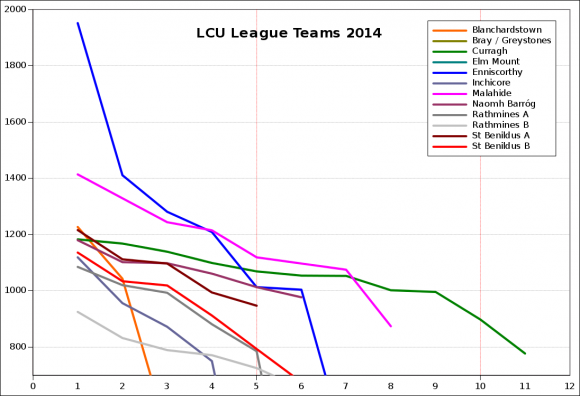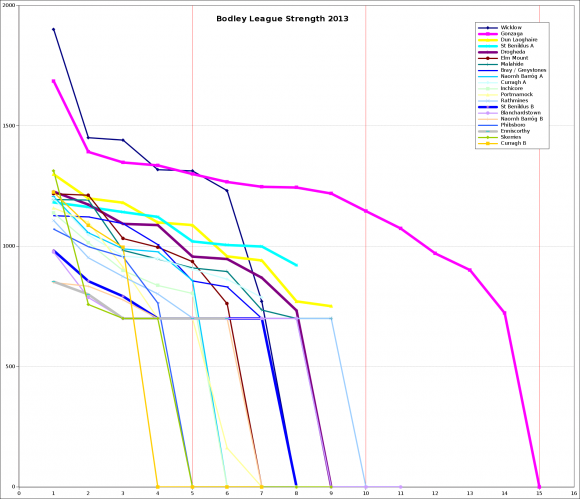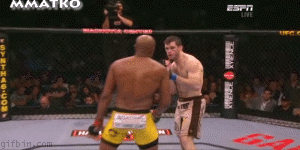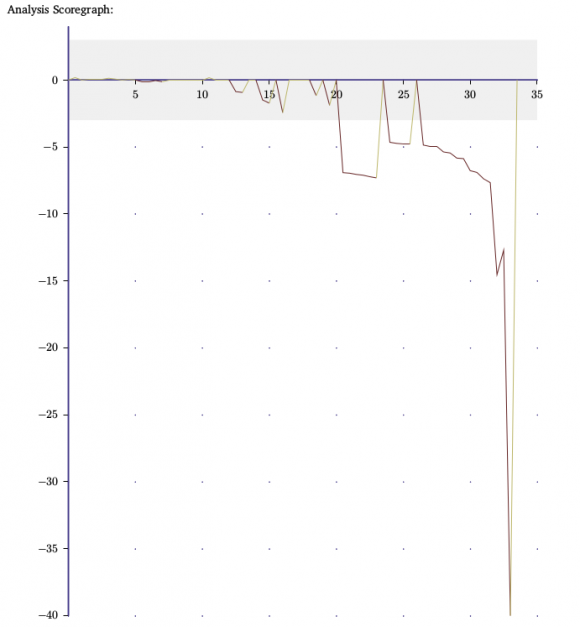Archives
29
Sep 14
Bodley League Strength
I kept waiting for the LCU site to put up the player panels and other tables for this year’s leagues, but nothing had shown up even after several of the round one games were played; then I saw this morning on boards.ie that they’ve actually gone up on ChessLeague.net here (I have no idea why they’d maintain two sites, especially when they’re not being fed from a database but generated on someone’s computer, but I guess no-one’s made it easy enough yet):
- Div 1 Armstrong Cup
- Div 2 Heidenfeld Trophy
- Div 3 Ennis Shield
- Div 4 O’Hanlon Cup
- Div 5 BEA Cup
- Div 6 Bodley Cup
Division 7 isn’t up yet, but they’re still ironing out the details on that one, so fair enough. There’s also a player list showing everyone back to 2003, and a handy all-on-one-page set of league tables, and of course the all-important upcoming fixtures list (though it seems to have a few divisions missing from it).
I’m having some fun reading through the Bodley player panels right now to see who we‘re up against and how highly they’re rated — it’s not all great reading 😀
| Club | Avg.Rating | Avg.Rating Top Five | ||
| Enniscorthy | 1186.7 | 1373.2 | ||
| Malahide | 1170.9 | 1264.2 | ||
| Curragh | 1039.8 | 1131.6 | ||
| Naomh Barróg | 1071.8 | 1090.8 | ||
| St Benildus A | 1073.2 | 1073.2 | ||
| Elm Mount | 999.0 | 999.0 | ||
| St Benildus B | 928.2 | 978.8 | ||
| Rathmines A | 680.6 | 952.8 | ||
| Rathmines B | 725.9 | 808.4 | ||
| Inchicore | 616.2 | 739.4 | ||
| Blanchardstown | 649.4 | 649.4 | ||
| Bray / Greystones | ||||
The Curragh club have some nice strength in depth there, though Malahide inches them out given that only five boards can play in a match; Enniscorthy have a 1950 rated player on their panel which is rather skewing things (why they’re playing in the Bodley of all places is something even they couldn’t answer last year), but all it takes is for them to have one or two players unable to make a game (and for Enniscorthy, with all that travel they have to do, that’s a fairly large risk) and they’re going to lose points off several of the teams. Not to mention that it’s the Bodley and the ratings are generally very unstable in the Bodley so they’re not the greatest of indicators. Nonetheless, the top place does look to be a fight between Enniscorthy and Malahide and player attendance levels in Enniscorthy will play a large role there. There’s a lot more contention over third place, with three or four clubs in the league in realistic contention there. Personally I’d like to think Benildus A will take it – they’re lower on ratings, but play up very well, and they have a few decent sub players to call on if needed. So Malahide, Enniscorthy, and Benildus A would be my guess for the top three this year; and I think our team (Benildus B) will come in as seeded, maybe a little better.
Just for fits and giggles by the way, here’s what that graph looked like last year (including both A and B groups):
Either way, it’s going to make for an interesting year – and speaking of which, next game is this Wednesday, at home, against Bray/Greystones, which should prove a bit of a challenge if they’re as strong as they were last year, when they could field three 1100s, a 1000, and an 850, which would see us in uphill fights on boards 1 through 4 and at a serious disadvantage on board 5…
24
Sep 14
Bodley 2014, Round 1
And there we went! 😀
After a few minutes of the normal kind of delays, we got the 2014 Bodley season rolling in Benildus tonight with our A-team-v-B-team match, and there wasn’t any quarter being given. I got paired up against Finn (who’s still the club Junior Champion as well as the Leinster u-14 champion) on board 3 as white, so I was expecting a difficult game (the ratings say I had 3/2 odds, which isn’t as bad as other games I’ve had recently, but still hairy).
As I’d drawn white, I got to opt for an English opening, but it went a bit pie-shaped around move 6 when I didn’t listen to what I wanted to do and it put me off a tad. I’m consoling myself with the note that in none of my English opening books (well, the four I’m restricting myself to at the moment anyway) does it cover the 5.d3 variation so I was winging it from thereish onwards, but it does rankle that the only master-level game I can find that followed ours only got as far as move 8 and then was revealed as an agreed draw where they might as well have been making moves using dice. The analysis graph says I never really got into the game as such and was on the back foot for most of it, which tallies with what it felt like from around move 11 onwards:
Here’s the game with annotations:
[pgn eo=t autoplayMode=none pieceFont=alpha ss=64 ps=64 h=800 commentsDisplay=newline][Event “Bodley Cup 2014”]
[Site “St.Benildus Chess Club”]
[Date “2014.09.24”]
[Round “1”]
[White “Mark Dennehy”]
[Black “Finn McDonnell”]
[Result “0-1”]
[WhiteElo “1019”]
[BlackElo “1112”]
[ECO “A36f”]
[EventDate “2014.09.24”]
[Annotator “Stockfish 230814 64”]
1. c4
{+0.03}
1. … c5
{+0.18}
2. g3
{Straightforward Tony Kosten approach here
+0.00}
2. … g6
{+0.08}
3. Bg2
{+0.06}
3. … Bg7
{+0.05}
4. Nc3
{+0.13}
4. … Nc6
{+0.07}
5. d3
{Straight out of book up to this point with a Symmetrical English 5.d3 opening. This is my first major decision point and I went d3 instead of e4 because Finn led off with c5. e4 might have been playable here, but this felt more thematic.
+0.13}
5. … e6
{+0.04}
6. e3
{Thinking about e4 and a Botvinnick setup, but with the light bishop trapped in on c8 and out of a symmetrical variation to boot, didn’t think this would work. But I don’t want to play Nf3 and block my light bishop, so I play e3.
-0.13}
6. … Nge7
{-0.14}
7. Nge2
{-0.12}
7. … O-O
{-0.04}
8. O-O
{-0.13}
8. … f5
{This is as far as I can find in book with Pita-v-Despaigne (27th Capablana memorial tournament 1992) which from what I can tell ended in an agreed draw right after this move!.
In the game though, I was thinking he’d just opened up his kingside, and that convinced me to abandon the b4-b5 push plan and revert to the kingside push instead.
+0.39}
9. e4
{Not great, giving up a tempo to get back to where I originally thought of going on move 6, and basicly hoping he’ll push f4 (which he won’t). Skittles room says d4 was the better move here, and having played it over, I agree – I missed the exN step in the swap on d4 that could happen here with cxd, Nxd4, NxN, exN, Bxd4, QxB, probably because I kept seeing the board after e4 for some reason. Bother.
+0.06}
9. … a6
{Prepping for b5 maybe? Well, readily countered.
+0.21}
10. Be3
{Needed to develop the bishop anyway. Wouldn’t actually want to take on c5, the bishop would wind up a bit disjointed if I did I think.
+0.13}
10. … b6
{Finn obviously thought I would play Bxc5 though!
+0.18}
11. f4
{And this isn’t all that great. Skittles room says that with everything locked up on the kingside, this push is going nowhere, and that’s exactly how it went down. d4 is such a better move here…
+0.26}
11. … d6
{+0.17}
12. d4
{Hoping for cxd…
-0.31}
12. … fxe4 $201
{Well, of course. Bother. On the other hand, I own that e-pawn now…
-0.20}
13. d5 $6
{Oddly, the skittles room thought this was fine, but stockfish much prefers a straight dxc exchange here.
-1.15 / -0.20}
( 13. dxc5 Nf5 14. Bf2 bxc5 15. Nxe4 Rb8 16. Rb1 Bb7 17. Ng5 Re8 18. Re1 Qc8 19. b3 Ncd4 20. Nxd4 Nxd4 21. Bxb7 Rxb7 22. b4 Qc6 23. bxc5 Rxb1 24. Qxb1 Qxc5 $10 )
13. … exd5
{-0.87}
14. cxd5
{-0.93}
14. … Nf5 $201
{Oh, feck. Well, this put the boot into all my plans here. Post-game analysis says it’s not the end of the line, but it certainly gives things a shove towards the end…
-0.54}
15. Qd2 $6
{Now this is odd. Skittles room and myself both agree on Qd2 as the best move and Bf2 as being too passive, but stockfish goes in the exact opposite direction…
-1.35 / -0.54}
( 15. Bf2 Ncd4 16. Nxe4 Nxe2+ 17. Qxe2 Nd4 18. Qd2 Ra7 19. Rfe1 Re7 20. Re3 Bf5 21. Rae1 )
15. … Nxe3
{-1.49}
16. Qxe3
{-1.73}
16. … Nd4
{All this was as expected after Nd5
-1.80}
17. Bxe4
{-2.44}
17. … Qe7
{First move in a while that was a surprise.
-1.86}
18. Qd3 $201
{Trying to cover all three minor pieces and feeling a bit on the back foot here.
-2.21}
18. … Bg4 $6
{And again, stockfish and the skittles room differ completely!
-1.14 / -2.21}
( 18. … b5 19. Rae1 b4 20. Nd1 Bd7 21. Nxd4 Bxd4+ 22. Nf2 Bb5 23. Qc2 Bxf1 24. Kxf1 Rae8 25. Kg2 Qg7 26. Nd3 Qd7 27. Kh1 Re7 28. Nf2 Rfe8 29. Kg2 Bxf2 $17 )
19. Rae1
{Saw Bg4 a move or so back, this was the best response I could think of.
-1.83}
19. … Rae8 $201
{-1.17}
20. Rf2 $2 $17 $201
{Skittles room picks this out as the mistake that lost the piece, which is what lead to the loss of the game…
-2.75 / -1.17}
( 20. Nxd4 Bxd4+ 21. Kg2 Qd7 22. Kh1 b5 23. Bg2 Bf5 24. Qd2 Rf7 25. Rxe8+ Qxe8 26. Re1 Re7 27. Rxe7 Qxe7 28. a3 Kf7 29. Bf3 Be3 30. Qe2 c4 31. Kg2 Bd3 32. Qe1 Bd4 33. Qd2 Bb6 )
20. … Bxe2 $6 $17 $201
{-1.89 / -2.75}
( 20. … b5 21. Kg2 b4 22. Nxd4 Bxd4 23. Nd1 Bxd1 24. Qxd1 Bxf2 25. Kxf2 $17 )
21. Nxe2 $4 $19
{But stockfish picks out this point as the blunder. Interesting…
Either way though, the game’s now dead, it’s just going through the motions from here on out.
-6.79 / -1.89}
( 21. Rfxe2 Nxe2+ 22. Rxe2 Bd4+ 23. Kg2 Qf6 24. a4 Qg7 25. Kh1 Re7 26. Re1 Rfe8 27. Kg2 Rf8 28. Re2 $17 )
21. … Qxe4
{-6.92}
22. Qxe4
{-6.96}
22. … Rxe4
{-7.05}
23. Kf1
{-7.11}
23. … Rfe8
{-7.22}
24. b3 $201
{-7.31}
24. … Nxe2 $2 $19
{Yeah, I can see what stockfish means here, but by this point, it’s a bit academic.
-4.53 / -7.31}
( 24. … Nc2 25. Rc1 Ne3+ 26. Kg1 Ng4 27. Rc2 Nxf2 28. Kxf2 Kf7 29. Kf1 b5 30. Ke1 a5 31. Kd1 a4 32. Rd2 b4 33. bxa4 Ra8 34. Ng1 Re3 35. Nh3 h6 36. f5 gxf5 37. Rf2 Rxa4 38. Rxf5+ Ke8 $19 )
25. Rfxe2
{-4.65}
25. … Rxe2
{-4.73}
26. Rxe2
{-4.79}
26. … Rxe2
{-4.79}
27. Kxe2
{And it’s a formality from here on in. To be honest, if this wasn’t the Bodley I’d have resigned by now, but in the Bodley, you play the endgames out…
-4.81}
27. … Kf7
{-4.86}
28. Ke3
{-4.99}
28. … Bd4+
{-4.99}
29. Ke4
{-5.37}
29. … Kf6
{-5.45}
30. h3
{-5.83}
30. … h5
{-5.87}
31. g4
{-6.77}
31. … hxg4
{-6.90}
32. hxg4
{-7.38}
32. … g5
{-7.67}
33. b4
{-14.54}
33. … gxf4
{-12.70}
34. bxc5
{-53.28}
34. … bxc5
{And by now it’s just not worth going on, it’s obviously just dead.
-53.98}
( 34. … bxc5 { 32:-53.98} 35. Kxf4 c4 36. Ke4 Bg1 37. Kf3 Kg5 38. Ke2 Kxg4 39. Kf1 Kf3 40. Ke1 Bd4 41. Kd1 Ke3 42. Kc2 Be5 43. Kb1 )
0-1
[/pgn]
Oh well. The post-game analysis take on things was that there weren’t any enormous blunders really up until around about 20.Rf2 and that it was a reasonably solid game, better than I was doing this time last year. I’ll take that.
edit: The team report is now up here on the Benildus website.

Lessons Learned
- I’m still not remembering to Look Wide, Not Deep
- Watch for that tactic seen at 20.Rf2
- 5.d3 might be valid, but 5.d3, 6.e3 isn’t really, and 5.d4 is probably better in the symmetrical
- Pick a side earlier for that pawn push!



